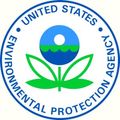The United States Environmental Protection Agency (EPA) recently issued revised guidance clarifying its position that commercial and industrial tenants can protect themselves from contamination liability under the federal Comprehensive Environmental Response, Compensation, and Liability Act (CERCLA, or "Superfund") by relying on an “all appropriate inquiry” of the ownership and uses of the property, timely performed by the landlord, or by timely performing the all appropriate inquiry themselves. Under EPA’s prior guidance, it was unclear that these statutory defenses were available to tenants. CERCLA imposes strict, joint, and several liability on designated persons, including owners and operators of facilities, where there has been a release or threatened release of hazardous substances. Although the mere execution of a lease does not necessarily impose CERCLA sec. 107 liability, tenants leasing contaminated properties may fall within the “operator” liability designation even if the contamination occurred prior to the tenant’s use of the property. Tenants are also listed in the CERCLA sec. 101(40) definition of "bona fide prospective purchaser" ("BFPP"). CERCLA provides a liability defense to BFPPs who can meet certain requirements, including the making of an "all appropriate inquiry", ordinarily a Phase I environmental site assessment, prior to purchasing or leasing the property. This defense can protect against CERCLA liability at a site that has historical environmental contamination that was not caused by the tenant. Subject to certain conditions, the BFPP defense applies even when the inquiry reveals historical environmental contamination on the property to be purchased or leased.
Under EPA’s revised guidance, a tenant can have derivative BFPP protection by relying on the landlord’s all appropriate inquiry or by performing the all appropriate inquiry itself prior to commencing operations if the landlord failed to timely undertake it or has acted in a way to invalidate this protection. The new guidance indicates how EPA will exercise its enforcement discretion under CERCLA. It is important to note that EPA may still take enforcement action against a tenant if it is potentially liable for reasons other than its status as a tenant or where the owner is not in compliance with state or federal regulatory requirements or cleanup orders.
A prospective lessee of commercial or industrial property should determine if the owner or landlord of the property timely performed an all appropriate inquiry prior to its purchase of the property, where the inquiry, purchase and lease occurred after January 11, 2002. If not, the tenant may want to consider performing a Phase I environmental site assessment prior to entering into a lease to obtain protection from CERCLA liability claims.
A link to EPA’s guidance document is here: "Revised Enforcement Guidance Regarding the Treatment of Tenants Under the CERCLA Bona Fide Prospective Purchaser Provision"


